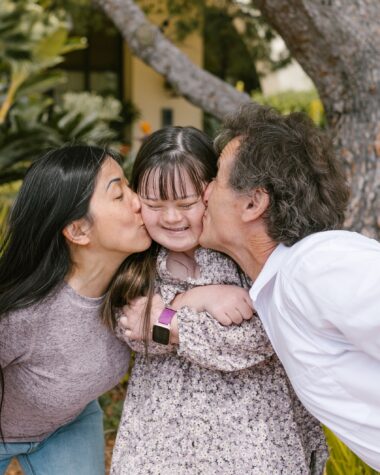Introduction
Applied Behavior Analysis (ABA) is a widely recognized and effective approach for teaching and supporting individuals with autism and other developmental disabilities. A crucial component of ABA is the prompt hierarchy, which is a systematic way of providing prompts to help individuals acquire new skills and behaviors. The use of prompt hierarchies is a fundamental aspect of ABA therapy and has a significant impact on its effectiveness. In this article, we will delve into the power of ABA prompt hierarchy, exploring its various types and effective techniques.
Understanding ABA
Before we delve into the details of ABA prompt hierarchies, let’s briefly understand what ABA is. ABA is a science-based approach to understanding and changing behavior. It involves systematic observation, measurement, and analysis of behavior to identify the underlying causes and develop strategies for behavior change. ABA is commonly used to teach new skills, reduce challenging behaviors, and improve the overall quality of life for individuals with autism and other developmental disorders.
What is a Prompt in ABA?
In the context of ABA, a prompt is a cue or assistance provided to help an individual perform a target behavior or skill. Prompts are used when a learner is unable to complete a task independently. The goal of using prompts is to teach the desired behavior or skill and gradually fade them out as the individual becomes more proficient.
The Importance of Prompt Hierarchy
Prompt hierarchy is a crucial aspect of ABA because it guides the progression of teaching. A well-structured prompt hierarchy ensures that the individual is provided with the right level of assistance to learn effectively. It also helps in systematically fading prompts to promote independence.
There are several types of prompts that can be used in ABA, and they are typically organized into a hierarchy. The prompt hierarchy moves from the most intrusive prompts, which provide the most assistance, to the least intrusive prompts, which provide minimal assistance. The goal is to move the learner through the hierarchy, gradually reducing the level of assistance until the skill is mastered independently.
Types of Prompts in ABA
- Physical Prompts: These are the most intrusive prompts and involve physically guiding the individual through the behavior or skill. For example, if teaching a child to brush their teeth, a physical prompt would involve physically guiding their hand to move the toothbrush.
- Modeling Prompts: Modeling prompts involve demonstrating the behavior or skill for the individual to imitate. The instructor performs the action, and the learner is expected to replicate it. This is less intrusive than physical prompts but still provides significant assistance.
- Verbal Prompts: Verbal prompts involve providing verbal cues or instructions to guide the individual. For instance, when teaching a child to say “thank you,” the instructor might say, “What do you say when someone gives you a gift?” Verbal prompts can range from highly explicit instructions to more subtle hints.
- Gestural Prompts: Gestural prompts involve using gestures or non-verbal cues to prompt the individual. For example, pointing to a toothbrush when teaching the child to brush their teeth.
- Visual Prompts: Visual prompts include using visual aids or cues to support learning. These can be in the form of pictures, diagrams, or written instructions. Visual prompts are less intrusive than verbal or physical prompts.
- Textual Prompts: Textual prompts involve written instructions or prompts. These are often used with individuals who can read—for example, providing a written list of steps for a task.
Practical Techniques for Using ABA Prompt Hierarchy
Now that we have explored the different types of prompts, let’s discuss some effective techniques for using prompt hierarchy ABA:
- Start with the Least Intrusive Prompt: When introducing a new skill or behavior, it’s essential to begin with the least intrusive prompt that the individual can respond to successfully. Starting with a prompt that is too intrusive may lead to dependence on that level of assistance.
- Systematically Fade Prompts: The goal of ABA is to promote independence, so it’s important to systematically fade prompts as the individual progresses. This involves gradually reducing the level of assistance provided.
- Use Reinforcement: Positive reinforcement, such as praise, tokens, or rewards, is a critical component of ABA. Pairing prompts with reinforcement can increase the likelihood of the desired behavior occurring.
- Individualize Prompting: Every individual is unique, and what works for one person may not work for another. ABA practitioners must tailor prompt hierarchies to the specific needs and abilities of each learner.
- Generalized Skills: ABA should not be limited to specific settings or individuals. The goal is to generalize skills across different environments and people. This means teaching individuals to use their skills in various contexts and with different people.
- Collect Data and Monitor Progress: ABA relies heavily on data collection and analysis. It’s essential to record and monitor the individual’s progress to make data-driven decisions about prompt fading and skill acquisition.
- Be Patient and Flexible: Learning takes time, and individuals with developmental disabilities may progress at different rates. ABA practitioners should be patient and flexible, adjusting their approach as needed to support the learner’s growth.
Also Read: Introduction to Personality Changes in Older Age
Conclusion
The power of ABA prompt hierarchy cannot be overstated. It is a foundational component of ABA therapy that allows individuals with autism and other developmental disabilities to acquire new skills and behaviors effectively. By understanding the various types of prompts and implementing effective techniques, ABA practitioners can make a meaningful difference in the lives of those they serve. Ultimately, the goal of ABA is to promote independence and improve the quality of life for individuals with developmental disabilities, and the careful use of prompt hierarchies plays a vital role in achieving that goal.








